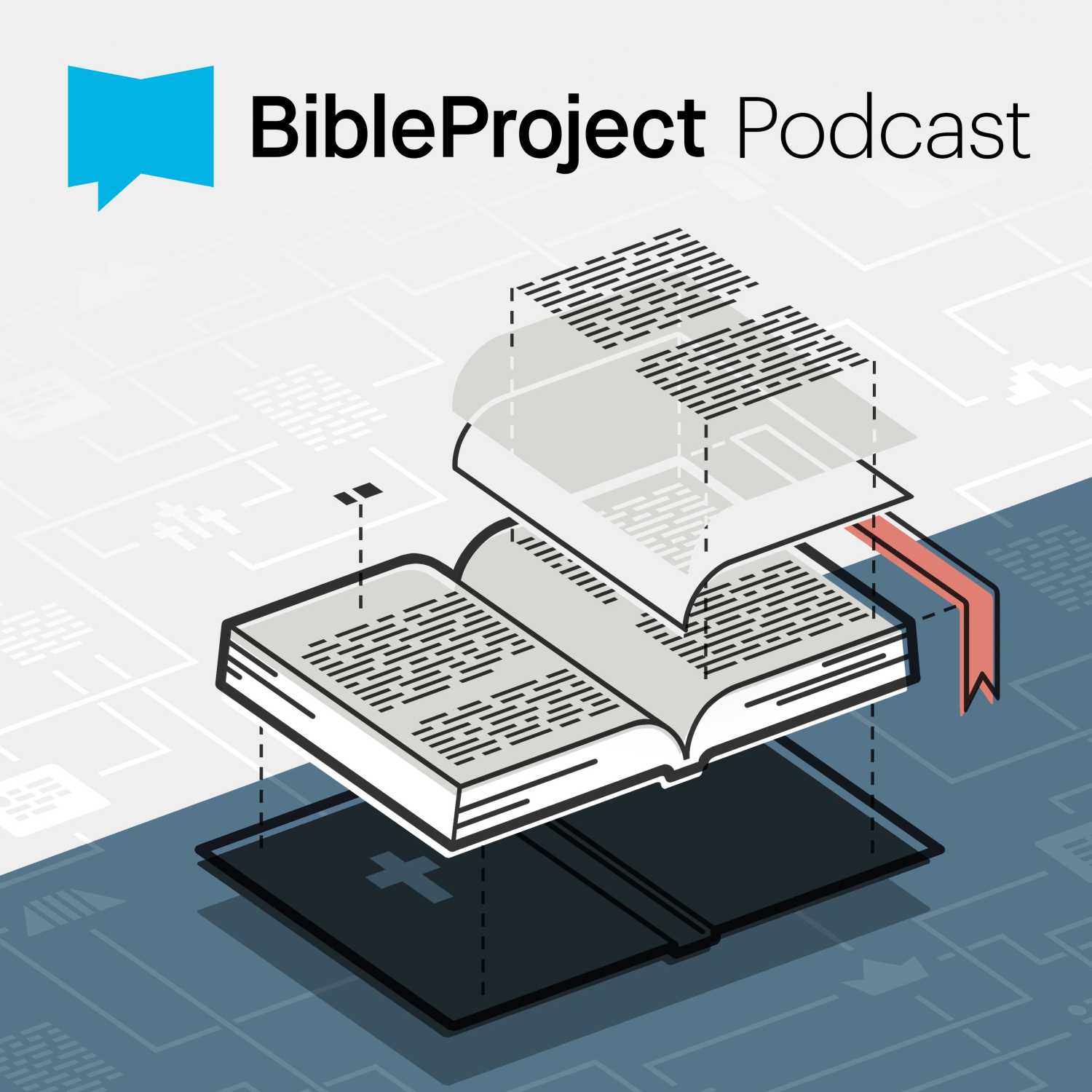-3.png)
Bible Basics
Welcome! The Bible Basics Podcast is designed to make the Bible approachable and accessible for all, particularly those who are new to the faith or curious about the Bible. Each episode focuses on a specific topic, breaking it down into bite-sized chunks and offering foundational knowledge about the Bible's structure, types, writing, and storyline. The ultimate goal is to increase listeners' comfort level with the Bible and deepen their relationship with God through reading His Word.
Click this link to send us a message:
https://www.buzzsprout.com/twilio/text_messages/2180587/open_sms
Bible Basics
Why is My Bible Different Than Yours?: A Guide to Understanding Translations
We'd love to hear from you - Click Here to Text Us a Message.
Ever wondered why your Bible reads like it was written in the 1600s or sounds like Shakespeare? Curious why it's different from what your preacher is reading? Join us in this enlightening episode of the Bible Basics Podcast as we explore the world of Bible translations and versions, revealing the history behind the King James Version (KJV) and how translation methods affect our understanding of the Bible.
We'll compare various translations, from the literal KJV to the paraphrased Message Bible, and share practical advice on choosing the right version for your personal study and growth. Plus, we'll provide useful resources, including a list of major Bible translations on the spectrum and a link to websites where you can read the Bible in a variety of translations. Don't miss this opportunity to better appreciate the richness and diversity of the Bible in the English language!
RESOURCES MENTIONED IN THIS EPISODE
- Word for Word Versions
- NASB - New American Standard Version
- KJV - King James Version
- NKJV - New King James Version
- RSV - Revised Standard Version
- NRSV - New Revised Standard Version
- ESV - THe English Standard Version
- Mediating Versions
- NIV - New International Version
- TNIV - Today's New International Version
- REB - Revised English Bible
- NAB - New American Bible
- CEV - Contemporary English Version
- GNT - Good News Bible: Today's English Version
-Thought for Thought Versions
- TLB - The Living Bible
- MSG - The Message
- NEB - The New English Bible
WEBSITES MENTIONED IN THIS EPISODE
Read the Bible in Various Translations:
- biblegateway.com
- biblestudytools.com
- bible.com
Thank you for tuning in!
Bible Basics is now streaming on Youtube. Please subscribe now!
Feel free to contact us at info@bible-basics.org. We would love to hear from you!
Note: All scripture references are from the NIV translation unless otherwise indicated.
What the preacher's reading is not what's in my Bible. What gives My Bible reads like something from the 1600s. It sounds like Shakespeare. How am I supposed to understand that? Oh, there are so many kinds of Bibles. How do I choose?
Jacqui Adewole:If you're struggling with questions like these, tune in to this episode of the Bible Basics Podcast for answers to these and other issues related to Bible translations. Welcome everyone. I'm your host, Jacqui Adewole, and this is the Bible Basics Podcast, where weekly, we break down the basics of the Bible into understandable, bite-size chunks. So what the preacher is reading is different than what's in your Bible. Well, the reason for that is that you're each using a different Bible translation or version. If you look at the cover of your Bible, you'll see the Bible version name or an abbreviation for it. If you're using a Bible app, you should see the version options that you can click on. Your Bible or your app might say NIV or New International Version, NKJV or New King James Version or MSG, the Message Bible. These are only examples.
Jacqui Adewole:Believe it or not, there are at least 50 versions of the English Bible currently in circulation. The oldest English Bible translation in common use is the King James Version, also referred to as the KJV Bible. You wonder why your Bible sounds like it was written in the 1600s, because it was. The King James Version of the Bible was first published in 1611 and remains the number one selling Bible in the English-speaking world. It was commissioned by the then King of England, James I. The King James Version became the Bible for English-speaking people, a position it held for almost 400 years. No other book has had such a tremendous influence on English literature and the church. Fun fact, many idioms we use today entered into the English language through the King James Version of the Bible. For example, "fall flat on your face, escape by the skin of your teeth, pour out your heart. New English translations of the Bible multiply greatly in the 20th century. But this still doesn't explain why your version reads so differently from the preachers. Well, it's because not every Bible version is translated using the same methods.
Jacqui Adewole:Some translations attempt to be as literal as possible. This is referred to as a Word-for-Word translation. The original manuscripts of the Bible were in Hebrew, Aramaic and Greek. Some translators attempted to keep their versions as close to the form of those original manuscripts, in both words and grammar, as possible. The King James Version was translated using this approach. Some Bible versions are translated less literally and more of a Thought-for-Thought method. This approach attempts to keep the meaning of the original language but puts it in words and idioms that are part of the normal way of using them in English. Some of these might be referred to even as paraphrases.
Jacqui Adewole:Notice that, in addition to the Word-for-Word and Thought-for-Thought approaches to translating, there's a third category, i'll refer to as mediating, which represents a middle ground between these two. Mediating translations are sometimes more literal, sometimes more thought-for-thought. Their goal is to try to maintain a balance between form and function. Now think of our Bibles as being on a spectrum, with the literal, word for word versions on one end and the Thought for Thought versions on the other, with the mediating translations in between. The King James Version and the Revised Standard Version would be at the far end of the Word for Word side. Paraphrases such as the Living Bible and the Message would be at the other end, the Thought for Thought side. Many of the other translations, including my preferred Bible, the NIV or New International Version, attempt to meet in the middle between these two approaches.
Jacqui Adewole:Here's an example of a verse translated by the different methods. This is the 1 Timothy 1:6 in the King James Version. A Word for Word translation. It says "from which some have swerved, have turned aside into vain jangling. The NIV, an example of a translation in the middle of the spectrum, says some have departed from these and have turned to meaningless talk. And finally, a Thought for Thought translation would read they have turned away from these things and spend their time in meaningless discussions.
Jacqui Adewole:Huge difference there, isn't it? So which one should you choose? In my opinion, choose one that you will read and study faithfully. Choose the one that is most impactful for you. Some translations are more accurate in some areas than others. You might consider a recommendation from your pastor or someone else whose biblical knowledge you respect. Discuss the reasons for their preference.
Jacqui Adewole:Another approach might be to consider a verse you're familiar with and compare it in different versions. This is easy to do on a website called BibleHub. com. As you study the Bible, i always recommend having two or three of the major translations for comparison's sake. Have at least one word for word and one thought for thought translation. If a verse or passage in one translation is a little confusing, it can be helpful to compare it side by side with another version. In the show notes I've posted a list of the major Bible translations on the spectrum, as well as a link to websites where you can read the Bible in a variety of translations. If this has been beneficial to you, please subscribe or follow and tell someone else about the Bible Basics Podcast. Thank you for listening and we'll talk again soon.




